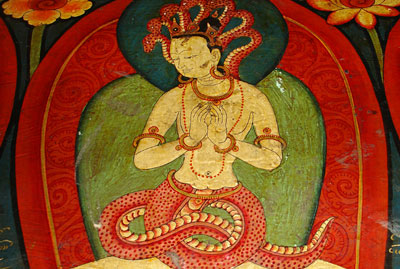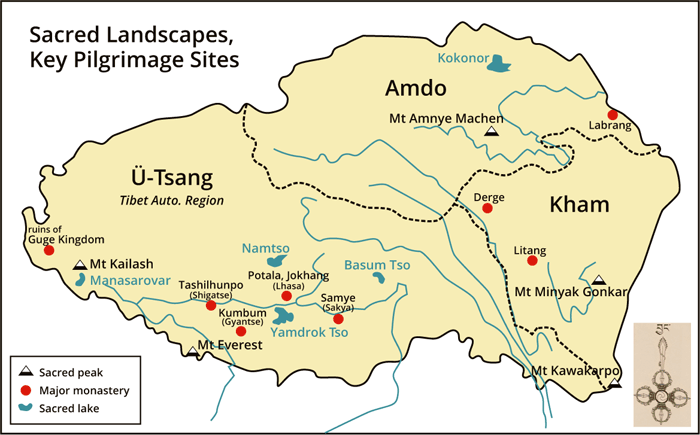
Tibetan Taboos
- Why do Tibetans avoid fishing in rivers and lakes?
- What water spirits are believed by Tibetans to reside in large water bodies such as rivers, lakes, springs and wetlands?
- Are these spirits regarded as benevolent or wrathful?
- What do these spirits look like?
- Before 1950, there was only one hydropower project operating in Tibet, near Lhasa. What is the major traditional source of power or fuel, still used by nomads today?
- Before the 1950 take-over of Tibet, mining was very rare. Why?
- Tibetans have no need for nature reserves or protected areas. Why?
SEALING THE MOUNTAINS AND VALLEYS
Tibetan taboos related to hunting and killing—and preserving sacred landscape—go back centuries. Tibet was well ahead of the West in creating wildlife sanctuaries, through edicts issued by important lamas—based on Tibetan Buddhist compassion toward all living forms. The following is an excerpt from a 'High Sanctuary', a well-researched lengthy piece by Jamyang Norbu on his blog www.jamyangnorbu.com:
The first comprehensive examples of ri-rgya lung-gya territorial seals to specifically prohibit hunting and fishing are found in documents issued by the lay Tibetan ruler of Gyangtse, Rabten Kunsang (who also built the amazing Kumbum stupa-cum-temple complex) between 1415 and 1440. In effect, local rulers, monasteries and the (Ganden Photrang) government put in place a system of, what in modern parlance might be described as, wildlife sanctuaries, nature preserves, or even national parks. A comparison could perhaps be drawn to the game preserves of kings and aristocrats in Britain and Europe. But it should be noted that, in the latter case, the protection of wildlife, especially deer and game birds, was undertaken for the exclusive hunting privilege and pleasure of the monarch or aristocrat in question. Commoners who attempted to hunt such game were deemed "poachers" and till fairly recent times could be imprisoned, even hung for their crimes.
In Tibet the punishments meted out to those who violated a sealed territory varied, but it does not appear that they were fatal or necessarily brutal...
The establishment of "sealed" wildlife conservation areas was not merely a matter of issuing orders and inflicting punishment. Individual lamas and rulers also had to be prepared to invest their own resources in these ventures. Huber provides the example of the famed Jigme Lingpa, who purchased and sealed whole mountains as an act of compassion to animals.
Protection was not only extended to wildlife but often to the environment: the forests, grasslands, lakes and streams. Lama Lobsang of Ladakh told me of a forest outside Leh which was effectively under the protection of a fierce deity, who effectively deterred locals from chopping down trees, and even being mindful when gathering fallen twigs and branches.
